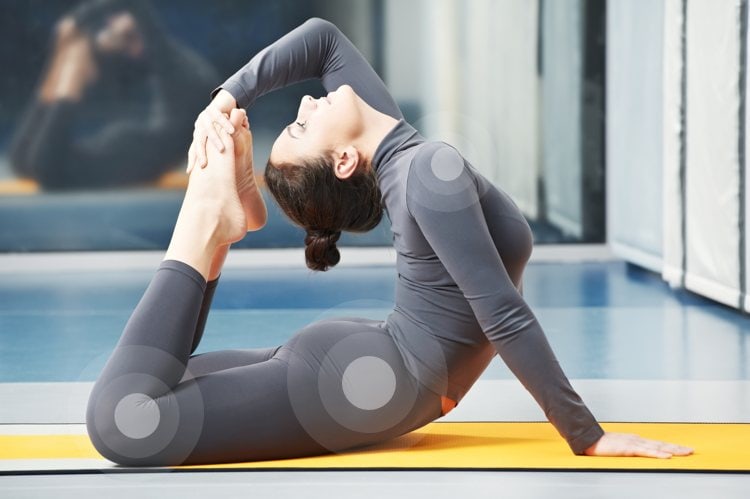Last month, I wrote an article called, “6 Essential Anatomical Reference Points for Yoga.” In it, I shared some phrases that are commonly used in teaching yoga and the anatomy behind each one.
Here are 6 more commonly used yoga anatomy terms. It can be helpful to understand each one not only so you can correctly take action on what’s being suggested, but also to understand what you’re asking people to do and why as a yoga teacher.
1. Top Edge of the Pelvis
The two pelvic bones join together in the back at the sacrum and in the front at the pubis. The top edge of the two pelvic bones forms a “rim” and the shape of the pelvis is bowl-like. Teachers refer to “making the top edge of the pelvis level,” or to “lift the top edge of your pelvis.”
This cue can help to stretch the hip flexors, muscles like the psoas, which need a level pelvis to be adequately stretched. Also, once you cue people into the top edge of the pelvis in seated poses, they can begin to feel if there is evenness to their seat as they are sitting and in seated postures.
2. Center Your Hips
Put your hands on your hips while standing with the feet hip width distance apart, and you will feel the top edge of your pelvis. Bring both of your index fingers to your belly button and start to trace your fingers along the top edge of the pelvis.
The two highest points, each called the ASIS on each side (Anterior Superior Iliac Spine) are commonly called “hip points.” They become the markers for bringing the hips to center (remembering that this instruction is a guideline, not something to hear and than shove yourself into the shape).
As you hear “center your hips,” you will bring the two ASIS’s towards the front edge of your mat (in a standing pose like Warrior I, for instance). Your hip points would face directly down in a pose like Pigeon.
Keep in mind that in order to center your hips in a standing pose, the position of your feet is crucial, especially the back foot. It needs to be turned slightly inward in order to center the hips.
3. Sitting Bones
Known as the “ischial tuberosities,” these two knob-like bumps are on the bottom edge of each pelvic bone. They hit the floor when we’re in seated poses like Boat Pose. Sometimes teachers refer to “sitting on the front edge of the sitting bones” in Seated Forward Fold or “dropping the sitting bones toward the heels” in Chair Pose.
4. Tailbone
Known as your “coccyx,” this is the final section of the spine. It’s concave when viewed from the side and depending on the orientation of the top edge of the pelvis, can be either reaching back or slightly tucked under.
When the tailbone is tipped backward, it’s known as “hyperextension” (too much extension). This orientation of the tailbone is seen in people where the psoas is shortened, thus drawing the pelvis into a forward tilt in a pose like Warrior I. A helpful correction is to lift the front edge of the pelvis and drop the tailbone down.
5. Relax Your Upper Ribs
In several standing poses, like Warrior I and Crescent Lunge, students may thrust their chest forward, creating a “caved in” back or lordosis (“swayback”). To avoid this swayback, which will tip the front edge of the pelvis down and prevent stretching the psoas, relax the upper ribs.
Place your hands under your chest and soften right under the chest and draw it slightly inward. At the same time, draw your belly in slightly to activate your rectus abdominus, the long abdominal muscle that runs up the midline of your body.
These two actions will level your pelvis and help stretch your psoas (on the straight leg) without hyperextending your tailbone.
6. Internally Rotate Your Thigh Bones
In backbends, including Bridge, Wheel, and Bow, it’s helpful to keep the thigh bones aligned, internally rotated, with the feet parallel to each other. To internally rotate your thighs from standing, stand with your feet hip width distance apart and rotate your inner thighs back.
In Bow Pose, your inner thighs would roll up towards the ceiling and in Wheel, they would roll down towards the floor. This positioning keeps the lower back broad, which is helpful for backbends.
There are many cues we hear when practicing yoga. The better we understand them, the more we can potentially experience the fullness of a pose. Furthermore, acute anatomical awareness will help us practice with greater safety and stability, and can create better alignment when sitting and standing as well.


